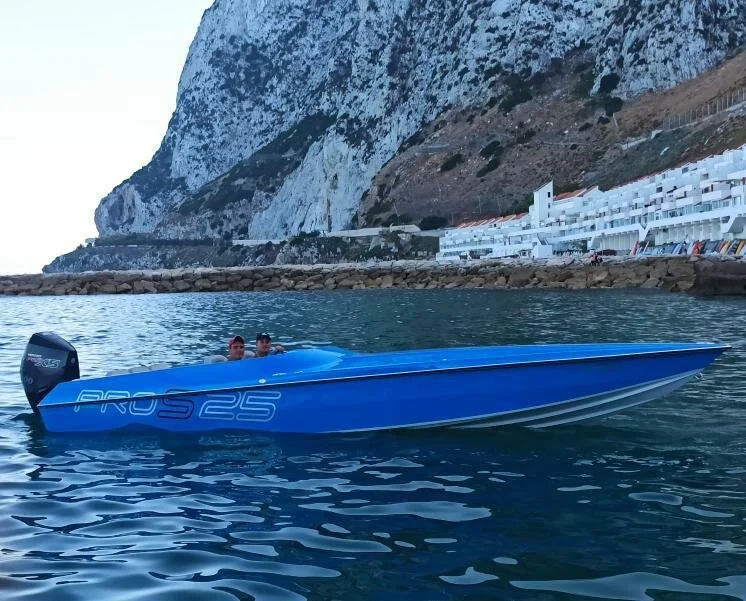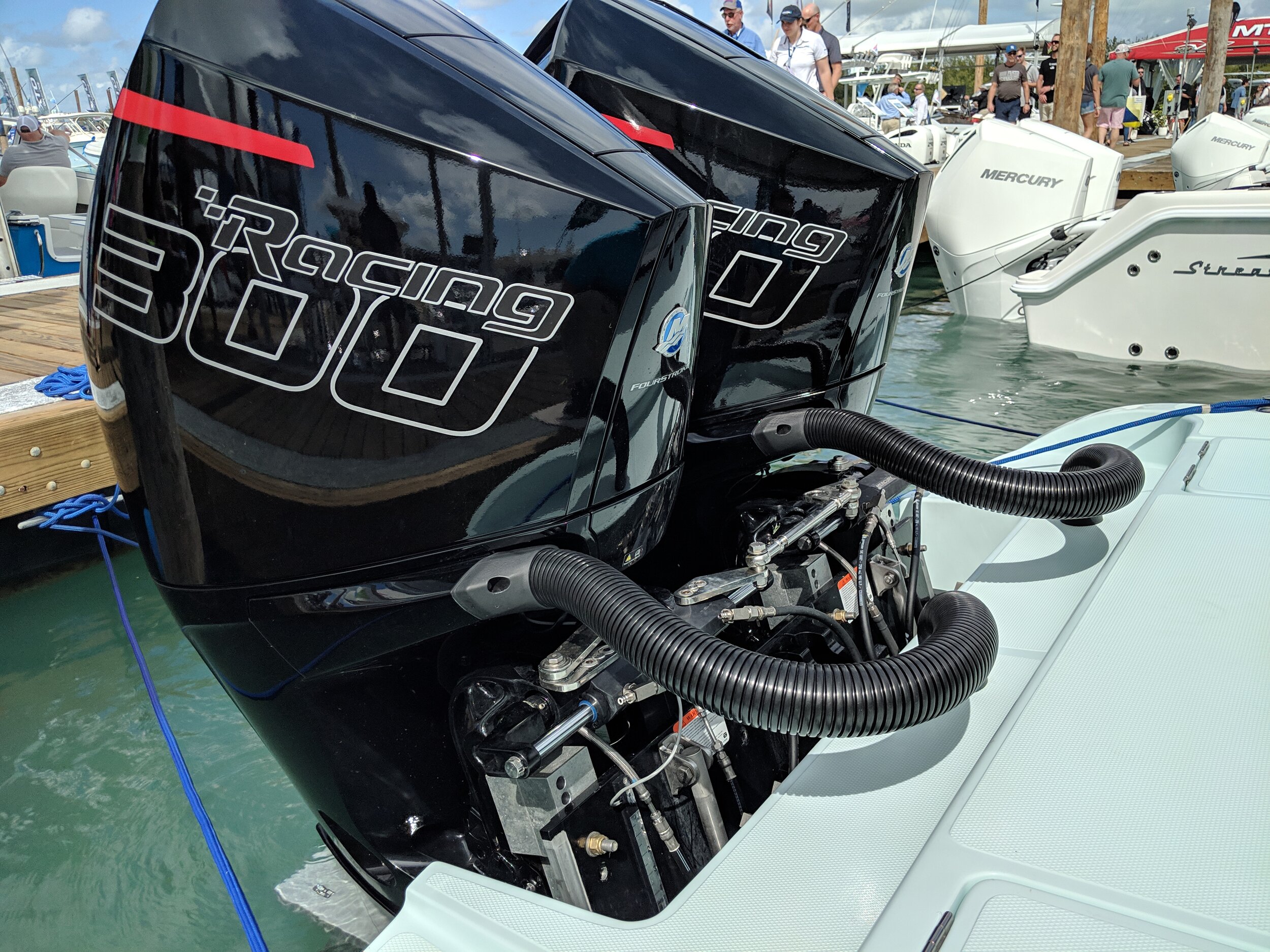Suzuki Marine: Outboard Market Share and the Future
America is the largest market for recreational boats in the world. A large population, many cities with access to water and a growing interest mean the boat market is growing a good rate. Most obviously, especially for recreational boaters, outboards continue to gain in popularity. Mercury Marine and Yamaha Marine dominate the American market but it’s hard not to notice the emergence of Suzuki in the past decade. Always a small presence in the US market, around 1994 Suzuki released their first four stroke outboards. In 2006 they released the first four stroke 300 HP outboard, which was quite a feat. What was Suzuki’s strategy to emerge as a true player in the competitive outboard game? And, what does the future hold for the storied Japanese engine builder?
Suzuki Motor Corporation is the 10th largest automobile producer in the world by sales, had total revenue of over 3.8 billion in 2019 and has a market cap of 19.5 billion. Small engines, all terrain vehicles and marine engines makeup a lesser portion of their total business but the company started in marine in 1965 and has made several notable innovations. Pioneers of outboard four strokes, EFI in smaller outboards, the first 300 HP four stroke and in 2017 won the IBEX innovation award for their new 350 HP outboard.
With over 100 years of engine manufacturing and 55 years of marine engine design experience, Suzuki is well positioned to innovate and compete.
What Suzuki did well is create competitive products, leveraged their engine building prowess and went after the repower market, leaning toward salt water fishing boats, while getting on enough new transoms for brand recognition. You do see more Suzukis in Florida, South Carolina and other large salt water markets where new boats sales are higher. And Suzuki’s presence is felt at all the major boat shows. One thing I have to admit, the engines look great and are available in two colors, white and black with clean modern lines and subtle graphics. For a while freshwater fishing has been the largest market, while salt water fishing is one of the fastest growing and this is the space Suzuki competes the most.
Even though the color mismatch makes my eyes hurt, there is no question repowering and comparing prices apples to apples, Suzuki will win on price every time.
The Japanese manufacturer has class leading engines too, for instance, the DF 70 and DF 90 4 cylinders were the lightest in their class for the longest time, as Merc and Yamaha fumbled around with switching from two stroke to four stroke, with overweight engines across the lineup, Suzuki had and still has the lightest in this range. The DF 140 has been around for a long time and is a repower dream for small fishing boats and center consoles. Under 400 Lbs, priced extremely well, the little 4 cylinder beat other 135 or 150 HP outboards on most specs and on price every time.
Suzuki makes a very modern and clean looking outboard. They are just missing a few details to make them truly competitive.
Because Suzuki has over 100 years of experience building engines and has substantial manufacturing scale it is really hard to compete with them on features and price. For reference, Yamaha Corporation has a market cap of 8.4 billion, Mercury’s parent company Brunswick’s is 4.9 billion. Suzuki’s market cap is almost twice as large as both Brunswick and Yamaha combined by market cap at almost 20 billion. Market capitalization is not the be all metric but the size and scale of Suzuki is large by marine standards.
Another strategy that worked in the repower game was Suzuki engineered their engines to be able to push larger boats, in the case of replacing two strokes, they geared their engines very low, to be able to match or undercut horsepower. For instance, the DF 140 might replace two 150s, by running a 2.59:1 gear ratio, the idea is that low end torque could compete, while giving up something on the top end. Most fishing boats, and center consoles are less concerned about top speed, and want low speed cruising. This works for some boaters and helps on cost for repower. Across the product range, Suzuki is generally less expensive to repower, and their products are really focused on the saltwater market. The low gear ratio strategy is problematic though and hurts Suzuki in the greater market beyond saltwater fishing.
The salt water fishing market is Suzuki’s bread and butter. The 300AP HP was the first four stroke in that HP range and is extremely popular.
Gear ratios in outboards and sterndrives are really key to overall performance and in some ways it is misunderstood. By gearing very low, you can effectively increase the low end power delivery, similar to how you might by being in a really low gear in a car but the analogy is bad for a couple reasons. Firstly, the gear ratio is fixed, the prop is variable. Propellers come in several configurations and pitches that affect performance, two props with the same pitch can perform completely differently, and the same design with different pitches likewise performs very differently.
The reason why Yamaha and Mercury typically offer much higher gearing (lower numerically) and even have optional gear choices, is because the taller gear allows you to turn the prop shaft at a much higher RPM, and it is far easier to change props than gears. For this reason, with lower gears you will be forced to run a higher pitch prop, at a lower revolution speed, which is not as efficient and you will hurt the hole shot and top speed because despite the low gearing advantage, it’s lost with the high pitch prop. For heavier slower boats this is less of a problem as they simply can’t go fast enough and are not efficient enough to make a huge difference. For any boat that is efficient and is fast enough, it is detrimental to overall performance running a low gear ratio. This is why Suzuki can’t get into the bass boat game, or anything remotely performance orientated.
An IBEX innovation winner, the massive 350A V6 with contra rotating propellers is unique and offers the ability to replace smaller twins, or level up as twins on a bigger boat.
Other Suzuki innovations include automatic timing chain tensioners, DOHC design, selective rotation allowing some models to be configured as counter rotating, offset driveshaft moving the crankshaft forward. The Suzuki 350A and 300B features a “dual prop” contra rotating prop shaft, which is unique on outboards. Where Suzuki loses is in weight. The smaller engines, DF 90 and under are light, but the DF 115 and up are among the heaviest outboards on the market. A Suzuki 150 weighs 511 Lbs, compared to Mercury and Yamaha at 455 Lbs and 470 Lbs. The 4 cylinder 200 HP is the heaviest in class and the competitive 300 HP category engine is a portly 570 Lbs. This makes the freshwater fishing market tough and again, anything remotely performance orientated is out.
The Suzuki 250AP and 300AP share this gearcase, a nice unit with a low water pickup. The weight of the V6 holds it back a bit and the 2.08 gears make it a package more suitable for tugboats.
Evinrude was a competitor and definitely had innovative features but with them out of the market there is a door open. Mercury Marine picked up the Evinrude transoms, but Evinrude loyalists who just can’t buy a Mercury, are probably looking at Yamaha or Suzuki.
If Suzuki directed their attention at the massive freshwater fishing and recreational market, representing about 50% of the outboard market, and wanted to compete in the performance fishing market, Mercury and Yamaha should be worried. Yamaha and Mercury are ultra competitive, each having distinct advantages with great products. Mercury Marine has great boat brands, dominates performance fishing with their ProXS line and owns the performance segment with Mercury Racing. Yamaha competes very well across the board, except in performance, but they own lots of transoms and lead in the saltwater fishing market. Suzuki does have a SS line of outboards but they are nothing more than matte paint and decals, offering no advantage.
With just a little innovation, Suzuki could really increase their market share. The formula is simple, a proper gearcase, taller gears, stiffer motor mounts and competitive weights. With these details addressed, all of a sudden, Suzuki increases their market massively and every outboard manufacturer would be on notice because Suzuki is a manufacturing powerhouse.
The 750 Lbs. 4.4 L V6 is best situated on a massive center console plowing through the water, wouldn’t it be great if Suzuki made a few performance engines? Hard to deny their engineering prowess.














